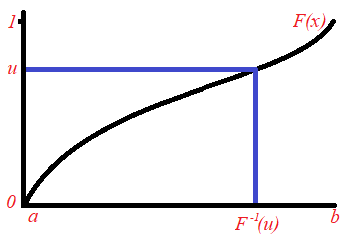
"Orthogonal column Latin hypercubes and their application in computer experiments". "Orthogonal arrays for computer experiments, integration and visualization".

Journal of the American Statistical Association. "Orthogonal Array-Based Latin Hypercubes".

Latin hypercube sampling (program user's guide). Introduction, input variable selection and preliminary variable assessment". "An approach to sensitivity analysis of computer models, Part 1. "New approach to the design of multifactor experiments". "A Comparison of Three Methods for Selecting Values of Input Variables in the Analysis of Output from a Computer Code". Thus, orthogonal sampling ensures that the set of random numbers is a very good representative of the real variability, LHS ensures that the set of random numbers is representative of the real variability whereas traditional random sampling (sometimes called brute force) is just a set of random numbers without any guarantees. All sample points are then chosen simultaneously making sure that the total set of sample points is a Latin hypercube sample and that each subspace is sampled with the same density. In orthogonal sampling, the sample space is divided into equally probable subspaces.Such configuration is similar to having N rooks on a chess board without threatening each other. In Latin hypercube sampling one must first decide how many sample points to use and for each sample point remember in which row and column the sample point was taken.One does not necessarily need to know beforehand how many sample points are needed. In random sampling new sample points are generated without taking into account the previously generated sample points.In two dimensions the difference between random sampling, Latin hypercube sampling, and orthogonal sampling can be explained as follows: Another advantage is that random samples can be taken one at a time, remembering which samples were taken so far. This sampling scheme does not require more samples for more dimensions (variables) this independence is one of the main advantages of this sampling scheme. When sampling a function of N, to be equal for each variable. A Latin hypercube is the generalisation of this concept to an arbitrary number of dimensions, whereby each sample is the only one in each axis-aligned hyperplane containing it. In the context of statistical sampling, a square grid containing sample positions is a Latin square if (and only if) there is only one sample in each row and each column.

#R LATIN HYPERCUBE SAMPLING MANUALS#
Detailed computer codes and manuals were later published. An independently equivalent technique was proposed by Eglājs in 1977. LHS was described by Michael McKay of Los Alamos National Laboratory in 1979. The sampling method is often used to construct computer experiments or for Monte Carlo integration. For categorical factors, I'm a fan of partition trees.Latin hypercube sampling ( LHS) is a statistical method for generating a near-random sample of parameter values from a multidimensional distribution. In general, you use the same analysis tools you would use if you were doing any other kind of sampling-Regression, logistic regression, ANOVA, partition trees. Important ones, but the point is that you'll never know if Unless you do the fullįactorial, the combinations you omit may or may not be the most Valid for excluded factor combinations and interactions The response surface and infer/project the response between adjacent design With continuous factors, you generally assume some degree of smoothness in Work, and was able to run more than a million simulated experiments One of my students recently did this for his MS thesis More than a minute or two, break it across multiple cores or multiple Don'tįorget an innermost loop for replications.

Loops iterating through the levels, one loop per factor. This on a computer! You can easily automate the process with nested 240 design points is nothing, you're doing Heck, this is what computers are for-to automate tediousĬomputational tasks.
#R LATIN HYPERCUBE SAMPLING FULL#
I'd recommend sticking with the full factorial with 240 design points, for the following reasons.


 0 kommentar(er)
0 kommentar(er)
